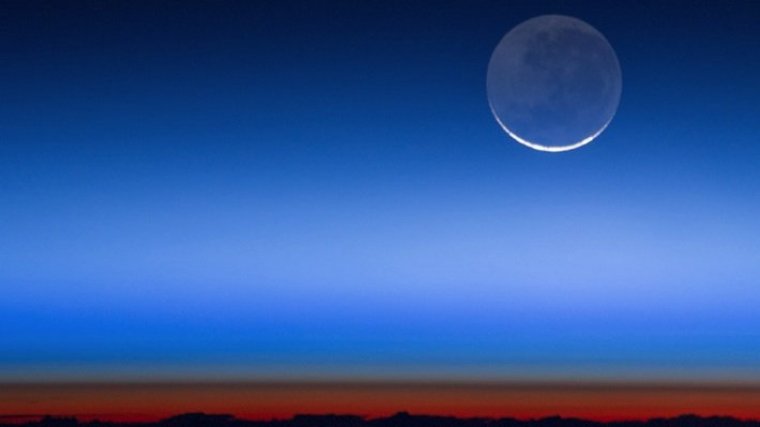| News / Science News |
Earthshine
NASA | MAY 29, 2014
Tonight when the new Moon rises, or in the next few nights when the Moon is a slim crescent, go outside and look up. You might see Earth’s reflected light in the dim glow.

Earthshine. Image credit: NASA Johnson Space Center. Caption by Holli Riebeek
A new Moon occurs when all of the Sun’s light is reflected away from Earth, and the side of the Moon facing Earth is barely visible, as illustrated in the above figures. Sometimes the dark face of the Moon catches Earth’s reflected glow and returns that light.
The dark face of the Moon has a faint shine, a ghostly version of a full Moon. The phenomenon is called earthshine. It tends to be brightest between April and June, though it does occur at other times of the year.
Earthshine is easiest to see around the time of a new Moon due to the position of Earth and the Moon in their orbits.
Earthshine varies in strength throughout the year, since the light reflected from the Earth varies. Earth’s reflected light (albedo) is brightest in the Northern Hemisphere spring with a second, slightly smaller peak in the Southern Hemisphere spring.
Satellite measurements of energy reflected from the Arctic provide a picture of why earthshine peaks in the spring. During this period, the Northern Hemisphere is tilted towards the Sun and winter snow and ice are still on the ground in the higher latitudes.
Because snow and ice reflect more light than vegetation or water, the spring is brighter than the summer or autumn, when there is much less snow and ice.
During the winter, the Arctic receives very little sunlight and reflects less light. Clouds and sea ice contribute to the peak in the Southern Hemisphere.
YOU MAY ALSO LIKE





